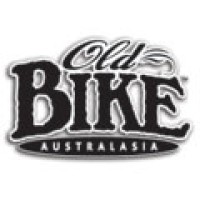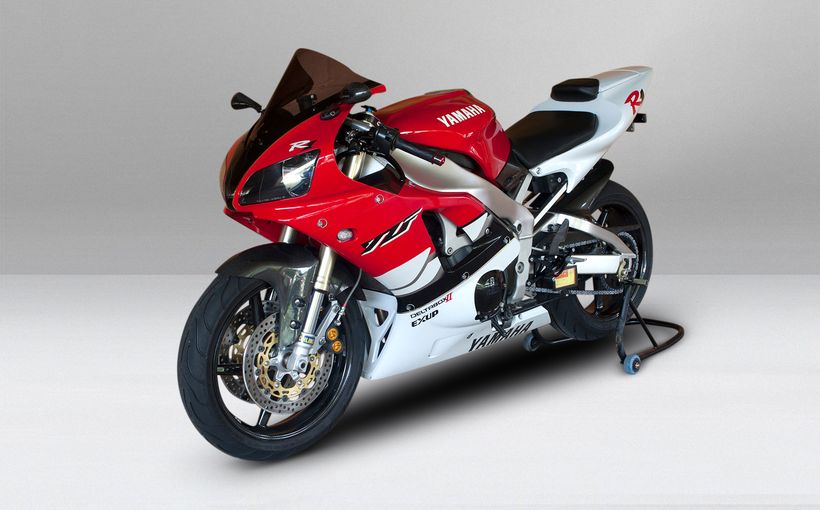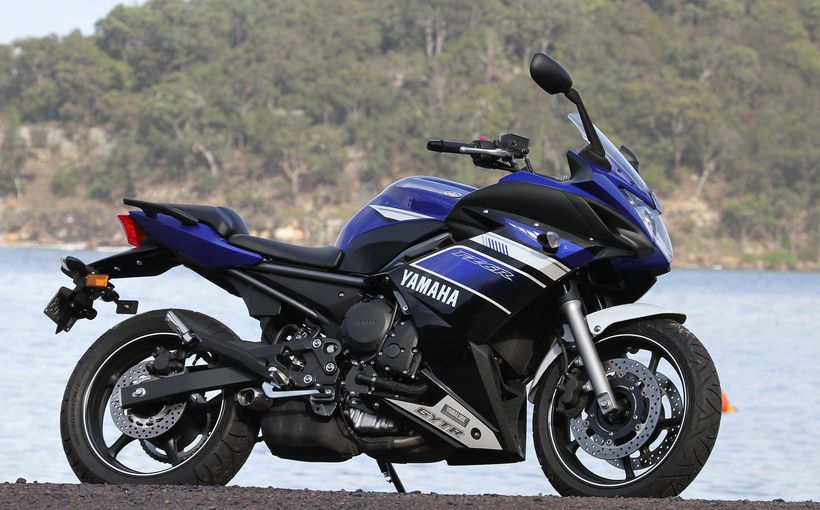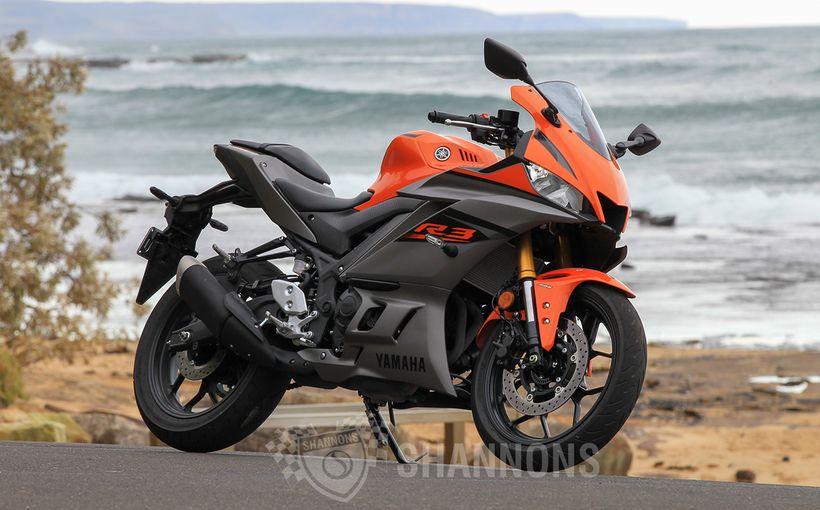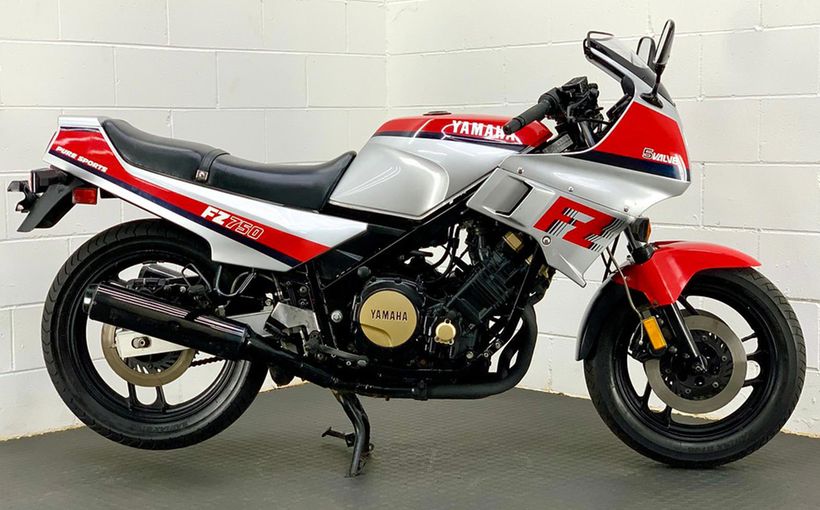Yamaha TZ250 - From hero to zero, and back again.

Business was good. Australia was enjoying a boom in the early ‘eighties after the credit squeeze a few years earlier, and the Australian advertising industry was booming right along with the economy. Associated activities in the advertising game, such as television commercial production was doing very nicely, although it was extremely competitive, with budding directors, producers and cinematographers popping up everywhere.
Peter Addison was in the right business at the right time. With his partner, director/cameraman Ross Nichols, they collared a big chunk of the high budget local stuff, due to carefully cultivated relationships with the big advertising agencies like Mojo, George Patterson and John Clemenger. Peter and Ross worked hard but also enjoyed the trappings of success, driving around in hulking great V8 Ford F100 trucks fitted with massive wheels and hot motors. Peter also had an interest, more a passion, for motorcycles and motorcycle racing, having been a member of Willoughby Motor Cycle Club for many years and a fairly handy competitor himself on a Maico on Short Circuits. Later he caught the Classic racing bug big-time, owning and riding an ex-Steve McQueen Matchless G50, and ex-Mike Hailwood 7R AJS, a 500 Manx Norton and a G45 Matchless twin.
He was also mates with Warren Willing, whose riding career had been cut dramatically short by a near-fatal smash in Ireland in 1979, but who had bounced back to begin an equally dramatic technical role that would eventually take him all the way to the top of the 500cc World Championships. In 1982, Warren was working for Dunlop distributors Emerson Sport, developing tyres that could keep pace with the rapidly escalating capabilities of Production bikes. He had been mightily impressed with the skill and determination of a young New Zealander who had put in some excellent performances on an unfancied Yamaha XJ750, and suggested to Addison that Richard Scott would perform well on GP class machinery. Without much hesitation, Peter bought a new Yamaha TZ250K, and phoned Scott, who had returned to NZ to contemplate his future.

“I’d had a lot of fun on bikes, and because I had a few spare dollars at the time, I thought it would be nice to give a young bloke a chance on good machinery, “ says Peter. “Warren’s contacts with Yamaha opened a few doors too.”
Richard recalls the beginnings of the association clearly. “I was back at home in NZ, and a couple of days before Christmas I get a phone call from this guy in Australia which went something like…’My name’s Peter Addison and I’ve got a brand new TZ250K Yamaha to do the Australian Championships. Warren Willing will be tuning it. Do you want to ride it?’ I thought about it for about five seconds and said ‘Yes!’ I had already signed up with the Toshiba Yamaha Dealer Team for 1983 to do the Production races, so there was no problem to ride Peter’s bike.”
Maiden outing for the new team was at the Australian Grand Prix at Bathurst at Easter. On paper, the 250 GP looked a shoe-in for Chris Oldfield, whose Jack Walters-owned Armstrong-Rotax had around 15 km/h advantage over the field, which included Bill Sayers’ rapid Rotax, and the flock of Yamahas led by Mike Dowson, Lee Roebuck, Vaughan Coburn, Warren Walker and Bernie Summers. Scott completed the first lap in fifth place, but when first Sayers and then Dowson succumbed to gearbox woes, Richard slipped through to second place, albeit a long way behind Oldfield. For a first outing, and Richard’s first time on anything other than a Production bike, it was very encouraging, but there were issues to address.
“Right from the beginning, the bike had a problem with the front end pattering on fast corners, “Addison recalls. “Actually everyone had a problem with pattering in those days, Willing added. “There’s no simple answer and it’s all to do with harmonics – the natural frequency of the tyres, the wheels and the chassis and the relationship between weight transfer. Effectively there’s not enough weight on the suspension to get it working – the unsprung mass is too close to the sprung mass.”

“Rightly or wrongly, I decided that the bike was too heavy, “says Addison, “ and began doing everything I could think of to lighten it – titanium nuts and bolts, axles and handlebars, drilling, and a Spondon aluminium frame. We weren’t aware of it at the time, but this weight reduction maybe compounded the (chattering) problem. We flew the chassis out after Bathurst, but it was a big job to get it ready for the second round of the Championships at Oran Park in July because it only arrived the week prior and we only had six days to build it up, with new pedals, footrests and so on to make.”
“When I first rode the bike, it felt weird – so ‘direct’ compared to the big heavy Production bikes I was used to,” says Scott. I hadn’t learned much about how a motorcycle works, especially suspension and steering, so I was very fortunate to have Warren tuning it. Initially I struggled to get comfortable, but soon got in the groove and began to love riding it. I could actually notice the difference a quarter of a turn off the compression made on the rear shock. Every month a new box of bits would arrive from Europe; the Spondon frame, Hans Hummel cylinders, Brembo brakes, adjustable magnesium triple clamps, and a 16-inch front wheel, which was a new thing in 1983. My mate Stu Wylie was a great help at the track, and with Peter and Warren we were a pretty tight team.”

“The 16” front wheel went some way to curing the pattering problem,” Says Warren,” but we never completely eliminated it. We concentrated on getting the engine to deliver the power better, with modified expansion chambers and fairly careful attention to getting the Lectrons spot-on.”
Scott had high hopes of success at Oran Park with the newly-framed TZ, but a tawdry start in the 250 race left him locked in a battle with Peter Hinton after Sayers had dropped the model, while Dowson cleared out for the win. Nevertheless, once into his stride, Scott sliced more than a second from the 250 lap record, then went out in the 350 round and won after leader Terry Paviell’s TZ350 seized. This time it was Dowson’s turn to battle through after a poor start.

The rescheduled Queensland round which had been washed out, finally happened on August 7th, and by this time Willing had fitted 38 mm Lectron flat-slide carburettors, and had also modified the front and rear damping in an effort to cure the pattering. In the 250 race, Scott and Dowson went at it hammer and tongs, slipstreaming each other on the main straight and swapping the lead constantly. Onto the straight for the final time, Richard timed his move perfectly and drafted past to take the flag by inches. In the 350 race, the Spondon 250 was outgunned, but Richard’s seventh place hoisted him to the lead in the title chase.
Miserable weather for Round Four in Adelaide upset the form book, but Richard’s second place to Tony Hinton gave him a share of the 250 cc title lead. He finished 4th in the 350 class behind Paviell, Dowson and Peter McKay, all on TZ350s. One month later the championship hopefuls were assembled at Wanneroo Park, bathed in sunshine after Adelaide’s drenching. Once again, Scott and Dowson were the form runners in the 250, but luck was out for the West Australian when his Yamaha broke a rod, leaving Richard to a clear win and a handy point lead. Once again he took fourth place in the 350 race.
The championship battle resumed at the sixth and final round at Calder. With a 14 point lead, Richard could afford to play it smart in the 250 race, but he didn’t. Exiting the pits in practice, he got only as far as the first corner before high-siding the plot, landing heavily and breaking his left shoulder in four places. Game over. Almost. Watching from the pits, all Richard could do was to hope that Peter Hinton would fail to score the 15 points for the race win to beat him to the title, and the salvation came in the form of Newcastle rider Geoff McNaughton, who rode the race of his life to win the race ahead of Dowson and Hinton, handing the Addison squad the championship.

Fired with enthusiasm, plans were already laid for a title defence the next year, and the Spondon Yamaha was put up for sale at $7,500 via an advertisement in Revs Motorcycle News. “I can’t remember who bought it – I had already ordered a new TZ250L for 1983 and the past was the past,” says Peter. “I never thought about it again (although I kept the 16-inch front wheel to use in the new bike) until I was at the 2009 Honda Broadford Bike Bonanza at Easter when I was talking to Mick Pettifer about it, and he said he knew where it was. All of a sudden, I was fired up to get it back again”
The years hadn’t been kind to the Spondon Yamaha. “When I first saw it my heart sank,” says Peter. “It was a real mess and obviously hadn’t been used for ages. “ It looked like it had been down the road quite a few times and the alloy frame was in really bad shape. Getting the chassis back to something like original was the first job I asked former GP mechanic Dudley Lister to do. He cut out the cracked and bashed sections, made new rails and welded them into place. Fortunately, under all the crud, most of the good stuff had survived, like the Astralite wheels and the trick adjustable triple clamps.”
The Hummel cylinders were past it, so Addison had to look around for new cylinders and pistons. “ I almost had a heart attack when I was quoted $500 each for the original single-ring pistons, but Dudley eventually worked out that we could use modified two-ring pistons from the YZ125K motocross bike, and they were a fraction of the price. I found set of barrels in the UK – not exactly cheap but not outrageous - so that got the motor back together again once Dudley had done the bottom end. Mind you, there were other horrors to deal with, such as the exhaust power valves, which had been put into the barrels backwards. We had to weld a puller onto the ends of them to get them out.”

The plan was to have the TZ ready for the 2010 Honda Broadford Bike Bonanza, but despite much midnight oil being burned, it didn’t quite make it. “The last few days (of the restoration) were incredibly frustrating, - we kept finding more little things that needed attention - and in the end we had to admit defeat. However twelve months later the Spondon was ready to take to the track again, and fittingly, it was Richard Scott who was once again in the saddle, 28 years after he had taken the bike to first place in the the 1983 Australian 250 cc Road Racing Championship.



